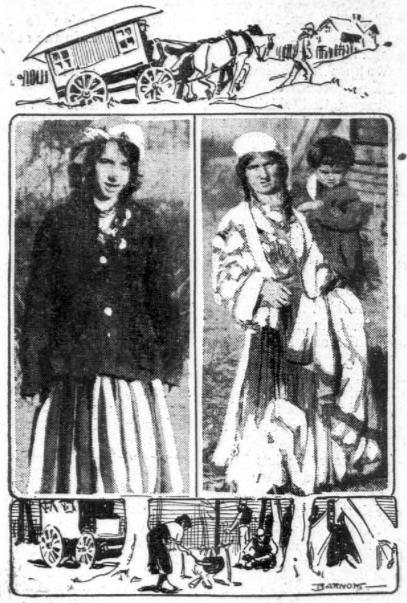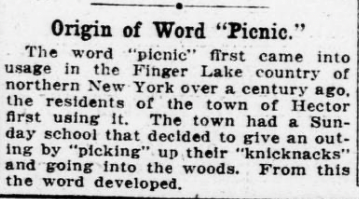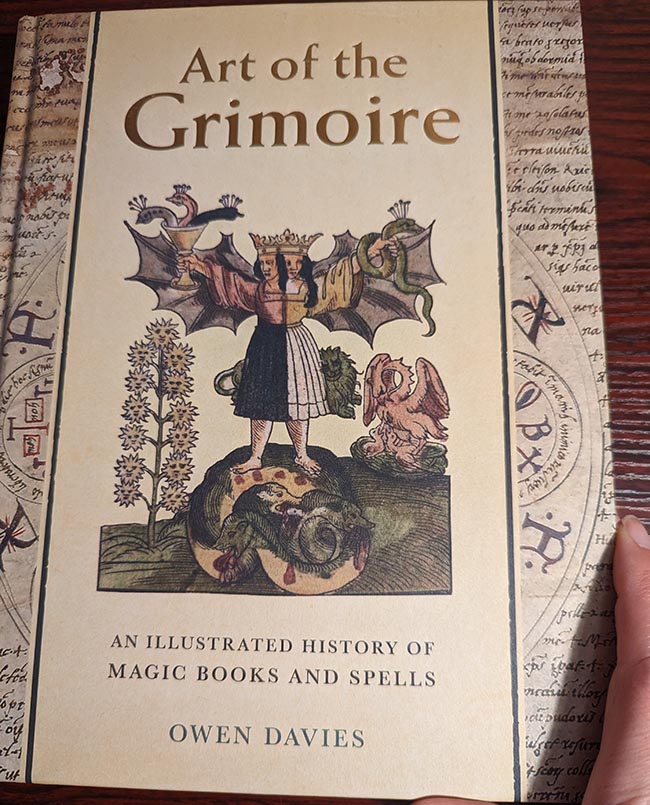
Gypsies who work? Can we get any more insulting?
The Romani were a subject of fascination in the early 20th century. There were numerous article printed about them and some people went as far as to try and actually learn about their culture and customs.

Think Of It! Gypsies Who Work!
A Band From Brazil Come To This Country [U.S.] To Mend Copper
Merchantville, N.J., Jan. 10 — Gypsies who work! Think of it. This end of the continent is all worked up by the visit of a band of this sort of gypsy.
They came here recently from Brazil, traveling overland by way of Panama and the Mexican border. There are nearly a hundred of them — men, women and children, mostly children.
The men are skilled coppersmiths. They are getting rich at their trade. No copper utensil is too far gone for these men to mend. They take a copper cauldron from which the bottom has been completely worn and braise a new bottom, making the expensive cauldron as good as new, for much less than a new one would cost.
The women earn money telling fortunes. The children beg. The tribe has a king who settles all disputes and the money goes into a common treasury.
That the work of the tribe is bringing substantial returns was shown recently when one of the men was accused of some offense against the Jersey law and held in $1,000 bail.
No bondsman could be found for such a nomad and the man would have had to go to jail had it not been for the resources of the tribe.
One of the gypsy women stood in the middle of the camp with her apron extended in both hands and one of the tribesmen, apparently the treasurer of the community, counted into her apron $1,000 in bills of various denominations.
As a consequence of this ability to pay their way the gypsies are loftily indifferent to local criticism. The girls and boys of the camp roam the country around, the girls, young and old, pulling with an air of enjoyment on well seasoned pipes, and the boys, some of them mere babies, puffing away contentedly at briars.
A local census taker, self appointed, found by close observation that the live stock of the camp consisted of 25 head of horses, 5 mules, 4 cows, 10 pigs, 16 chickens, 3 ducks, 6 dogs, 9 cats, 11 snakes, 2 turtles, 4 parrots, 2 canary birds, 1 monkey, 11 white rats, a colony of toads, 2 hives of bees and an unlimited quantity of insects.
The same statistician discovered that “Granny” Boremeno, the matriarch of the tribe, who acknowledges that she is over a hundred years old, has had 4 children, 15 grandchildren, 76 great grandchildren, 32 great great grandchildren, and 3 great great great grandchildren. If anyone doubts this last assertion let him visit the camp and observe the youth of some of the married tent dwellers and the extraordinary proportion of youngsters to adults in this community.
The children run around barefooted in the coldest weather and the clothes of the community have, for the most part apparently, been handed down from father to son and mother to daughter for generations.
Source: (1912, January 10). Think Of It! Gypsies Who Work. The Day Book.


